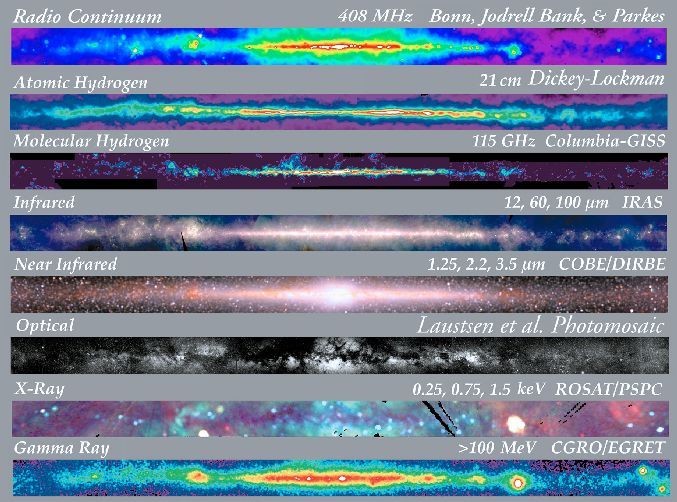The best way to look for how different DSO's look in different wavelengths is, as forever said, through Google Images or different satellite sites like Chandra, but sometimes you may have trouble finding these images. Luckily, certain wavelengths tend to have certain characteristics. Take the image below, for example:MacBookMinus wrote:I noticed that the rules say we need knowledge of how different DSO's and stuff look in different portions of the electromagnetic spectrum. I haven't found any good solid sources for that kind of stuff, or what exactly to look for in determining in whether a pic was taken in visible or infrared (just as an example). I hope this doesn't come off as rule clarification asking, because I'm not. I'm looking for resources.

Optical is what we see as visible light, so it'll appear as you'd expect it to. If it's a galaxy, you'll see the clouds that obscure some of the further stars.
Infrared senses heat, so the clouds aren't going to be as obstructive. Usually these images will appear redder than the optical image.
For Reach, you probably won't need to know the difference between Atomic and Molecular Hydrogen bands, and instead you just have to focus on Microwave. Microwave and radio are similar and their images look similar. In my experience, radio looks a little "fuzzier". Someone else might have a better way of explaining the difference.
On the other side, you have Ultraviolet, which isn't shown here. It generally appears purpler and bluer than optical.
X-Rays are the band in which Chandra takes images. These are areas of high energy, so stars, neutron stars, black holes, and other active areas appear bright, and not so much the inactive areas. You might see spots that are caused by X-ray emissions.
Finally, gamma rays are the highest energy. Objects here can look colorful like in radio, depending on the false color that the image is using, and they won't look very definite.
A lot of times, you just need to get a feel for guessing what wavelength an image was taken in. If you search for images taken in these wavelengths, you'll probably start getting a feel for what they usually look like. Normally, you won't get a lot of questions where you have to name the part of the spectrum in which an image was taken, so don't spend a ton of time on this. A general knowledge should serve you well.






